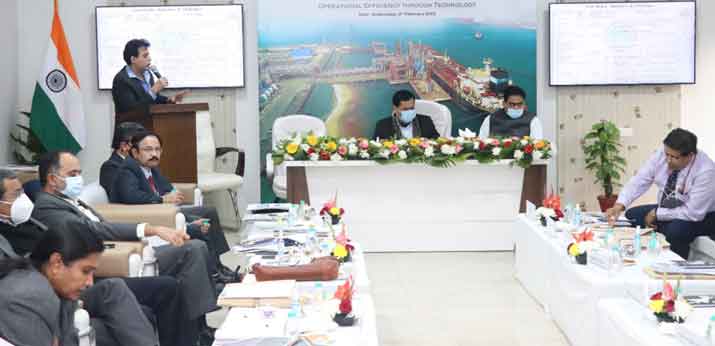INVC NEWS
New Delhi,
The recent push by the Government of India to boost energy production in the country and achieve the goal of 175 gigawatts of installed renewable energy capacity by 2022 has put the country on course to emerge as a major solar power hub. Over 300 million people in India still have no access to  electricity, which is why solar power is being seen as a viable, long-term solution for clean energy. Solar energy, a clean renewable resource with zero emissions, has tremendous potential waiting to be harnessed to meet the energy requirements. A series of conferences held during the 3rd Solar India 2018 expo on the theme, “Solar Energy for a Sustainable Future,” brought together several experts, government representatives, industry leaders who discussed India’s immense potential to tap renewable energy sources and capitalise on emerging opportunities existing in the solar industry.
electricity, which is why solar power is being seen as a viable, long-term solution for clean energy. Solar energy, a clean renewable resource with zero emissions, has tremendous potential waiting to be harnessed to meet the energy requirements. A series of conferences held during the 3rd Solar India 2018 expo on the theme, “Solar Energy for a Sustainable Future,” brought together several experts, government representatives, industry leaders who discussed India’s immense potential to tap renewable energy sources and capitalise on emerging opportunities existing in the solar industry.
Speaking during a panel discussion, Smt. Rajasree Ray, Economic Advisor, Department of Economic Affairs, Ministry of Finance, Government of India, said, “A majority of the capacity addition in India for renewable energy has taken place over the past four to five years, with a vast pipeline of projects being announced in the past few years. The International Solar Alliance (ISA), which was formed during the 2015 Paris Climate Summit, has evolved into a highly efficient intergovernmental organisation in just a little over two years. To meet the country’s renewable energy requirements, the government has also introduced competitive bidding mechanisms, which have in turn driven the prices of tools and technologies significantly. Furthermore, the inclusion of renewable energy projects in the priority lending sector has improved the ease of doing business and securing finance for the country’s renewable energies sector.”
The International Solar Alliance has been working towards realising the common goal of more than 170 countries in the world to reduce the cost of finance and the cost of technology in implementing renewable energy projects across various nations. For this purpose, the ISA will help mobilise more than USD 1,000 billion worth of investments by 2030 for massive deployment of solar energy, and pave the way for future technologies to meet the growing energy requirements across the globe. In addition, the Alliance has been committed to developing more progressive international price mechanisms for renewable energy technologies to make them easily accessible to smaller, developing economies.
Shri Anand Kumar, Chairman, Gujarat Electricity Regulatory Commission, India, during a panel discussion on India’s solar policy roadmap, said, “The central government and our Prime Minister have formulated a highly ambitious plan for enhancing renewable energy production. Gujarat already has a massive capacity of over 8,000 MW, which includes 7,000 MW from wind and more than 1,500 MW from solar. In the near future, our capacity will see a substantial rise now that the government has committed to add around 2,000 megawatts each year, thereby reaching a capacity of up to 10,000 megawatts by 2022.”
India is expected to become one of the largest green energy producers in the world considering the fact that the country is now the second-biggest solar-energy installer in the world. Also, according to estimates, India’s solar-energy capacity will see a 300 percent rise by the end of 2018. As part of its blueprint for energy security, the government plans to launch five funds of USD 5 billion each, targeted at promoting green energy sources. The centre has envisioned generating 40 GW through roof-top grid interactive solar power to fulfil the 100 GW target of solar power. For the period up to 2019-20, the government has allocated INR 5,000 Crore (USD 0.75 billion) for implementation of: 4,200 MW of solar rooftop systems and grid-connected rooftop systems. In addition, the Centre has set an ambitious target of generating 100 GW (1 lakh MW) of solar power by 2021-22 under the National Solar Mission, which is expected to generate 60 GW ground mounted grid-connected solar power.
















